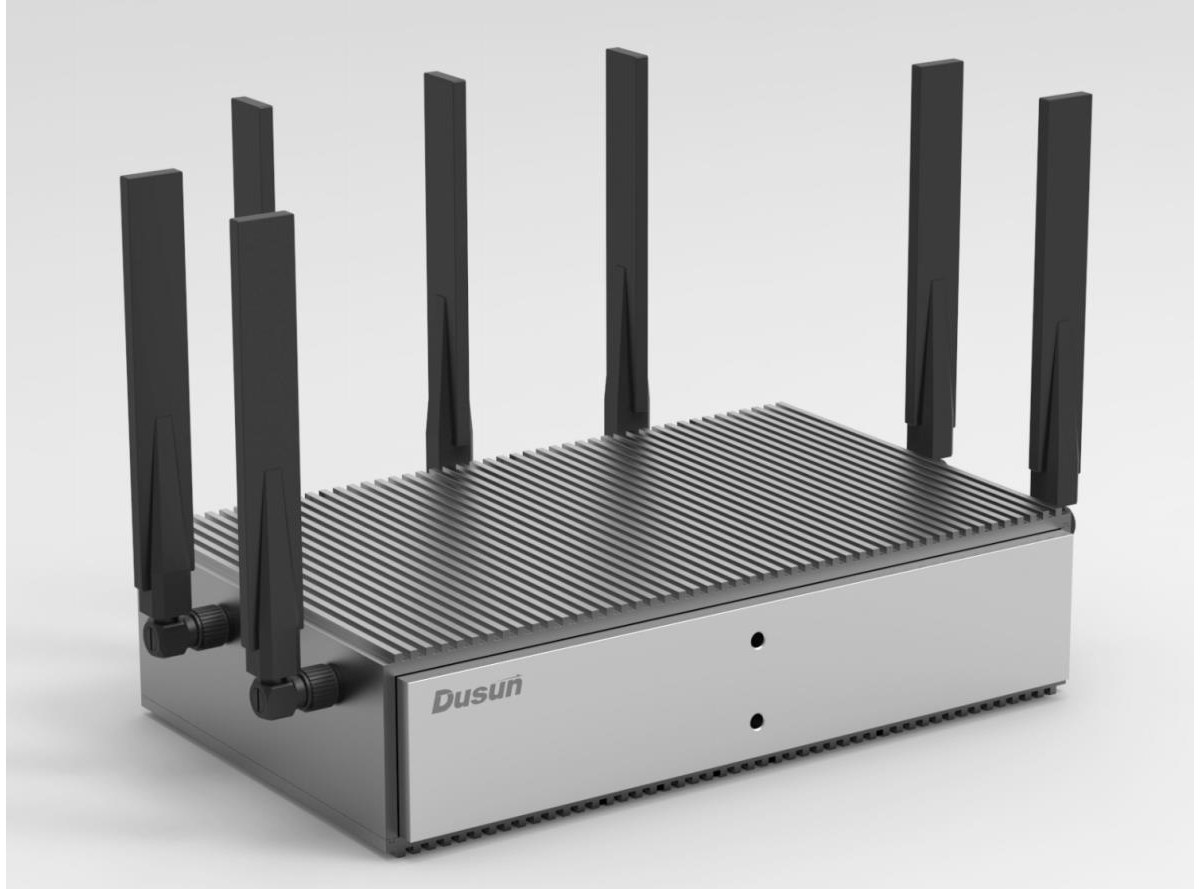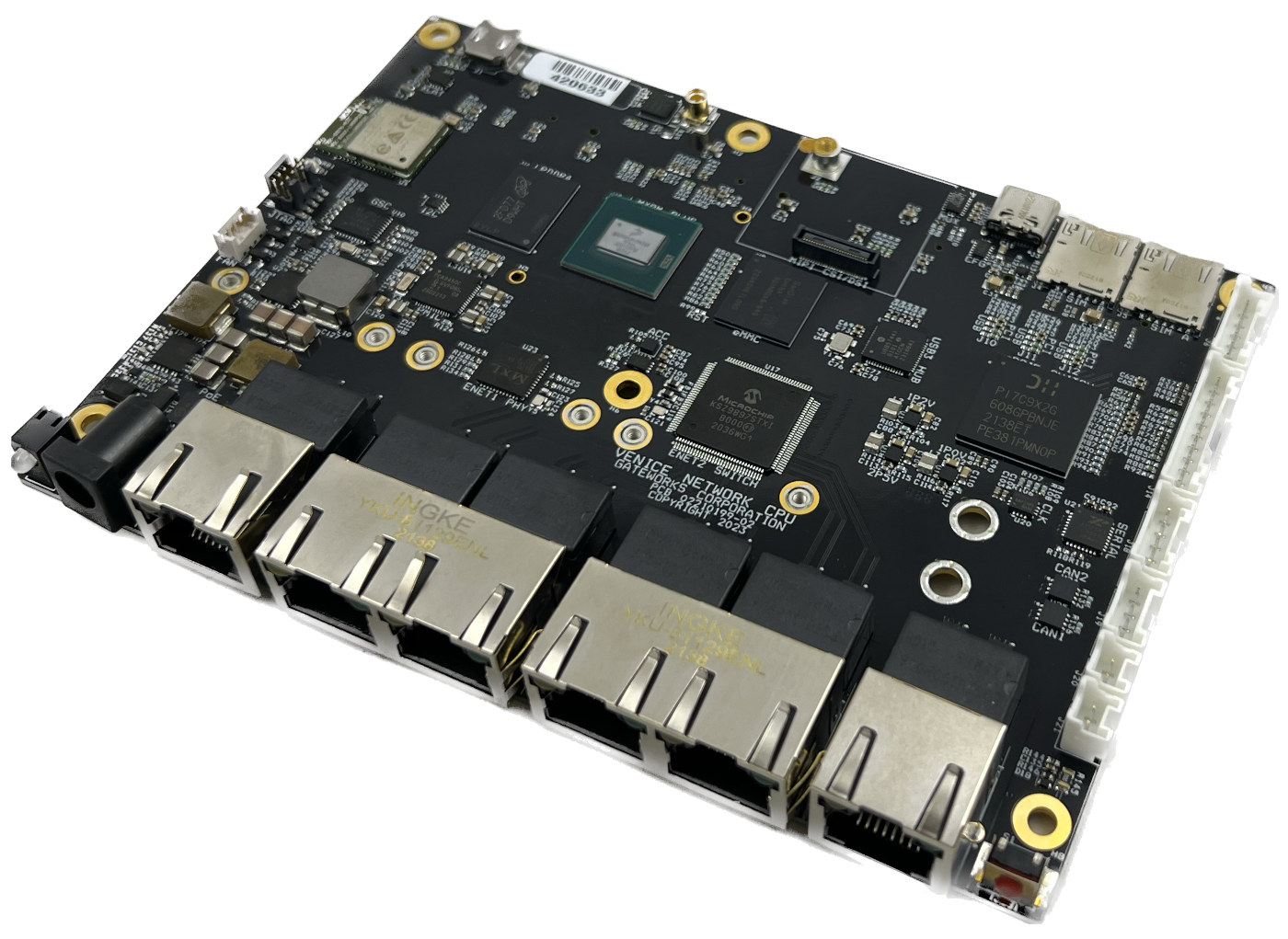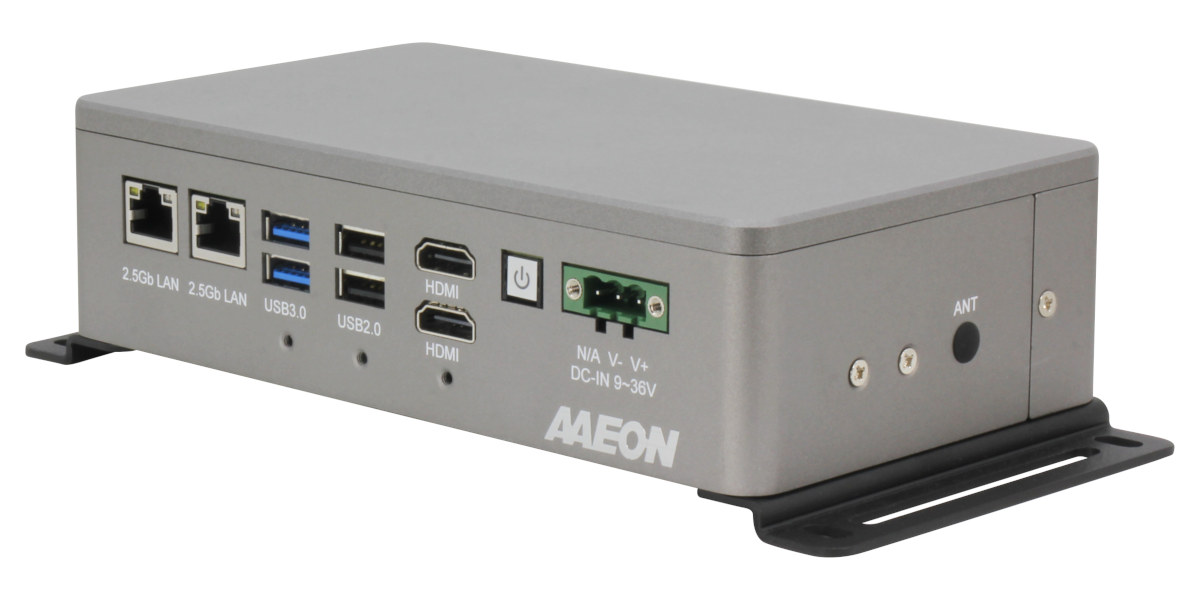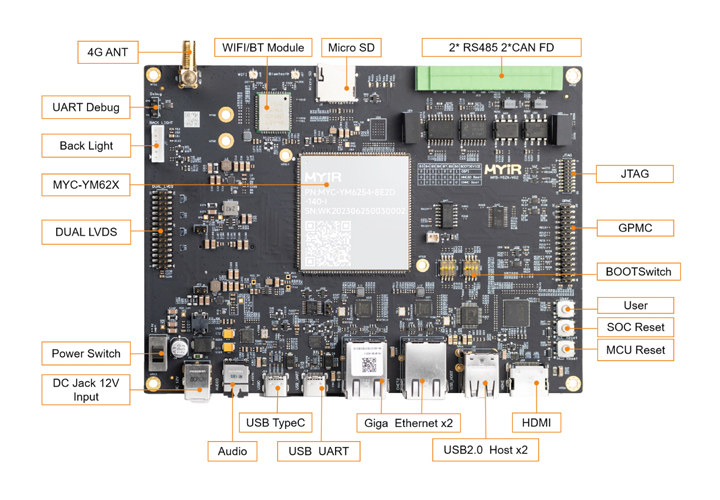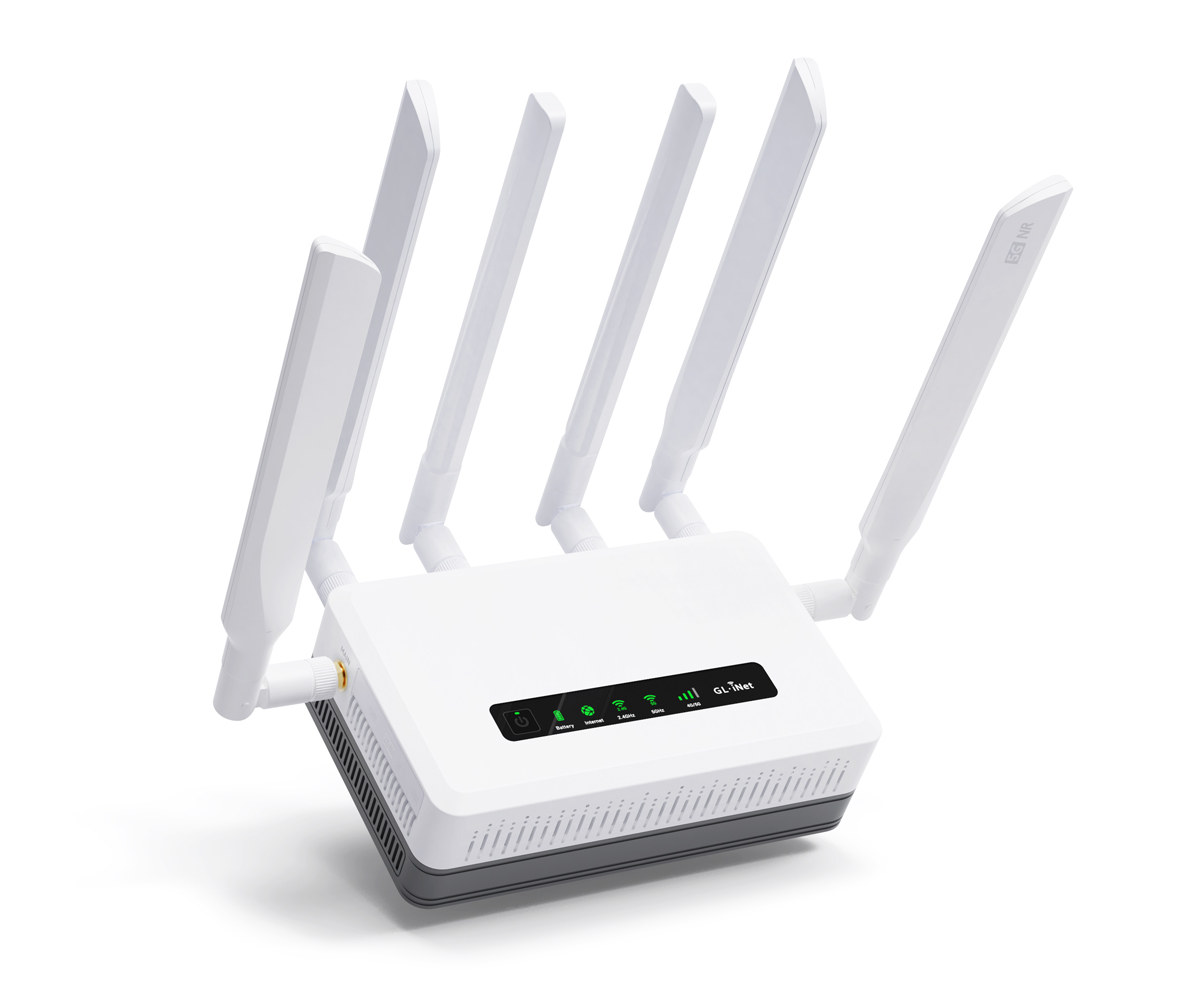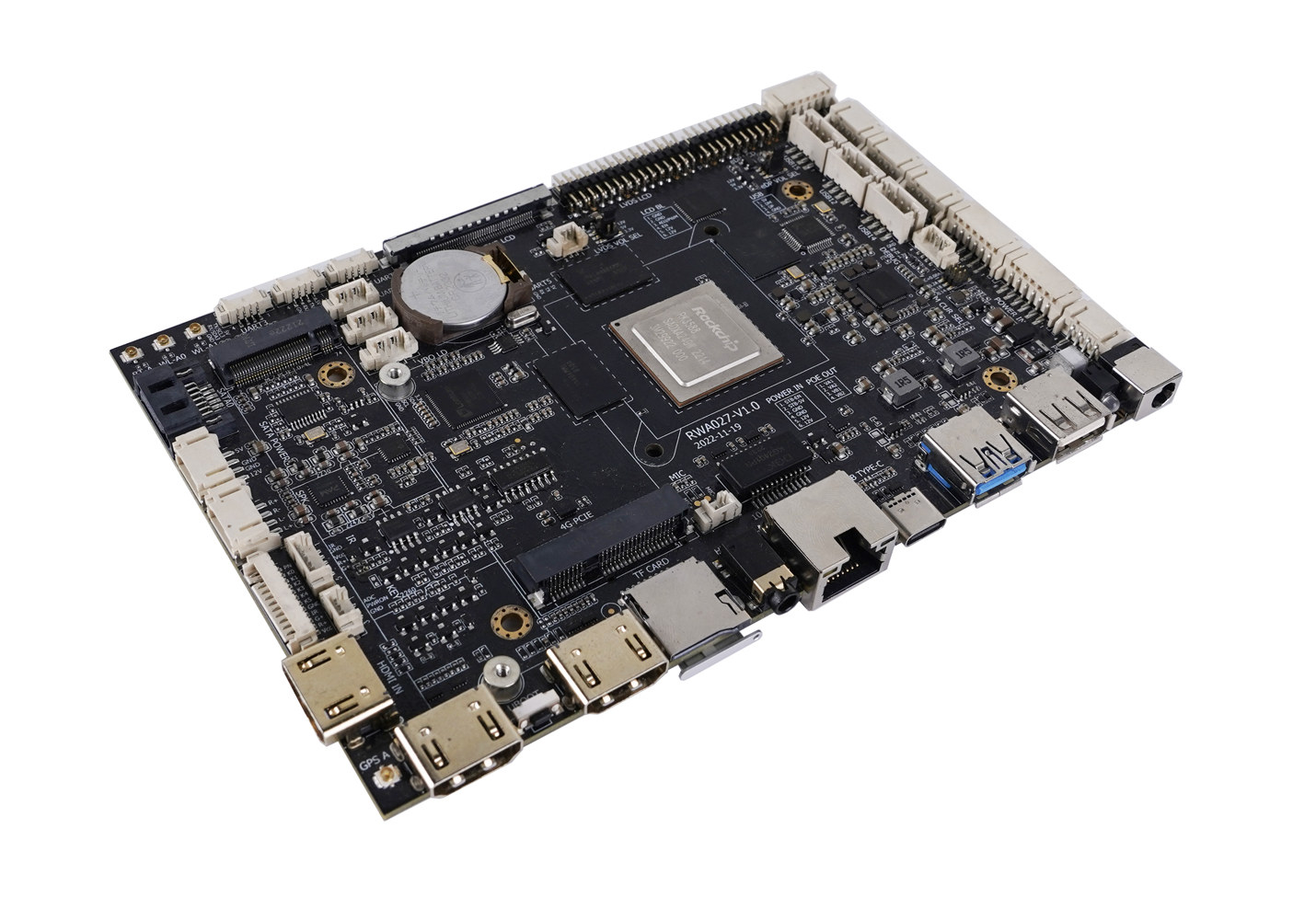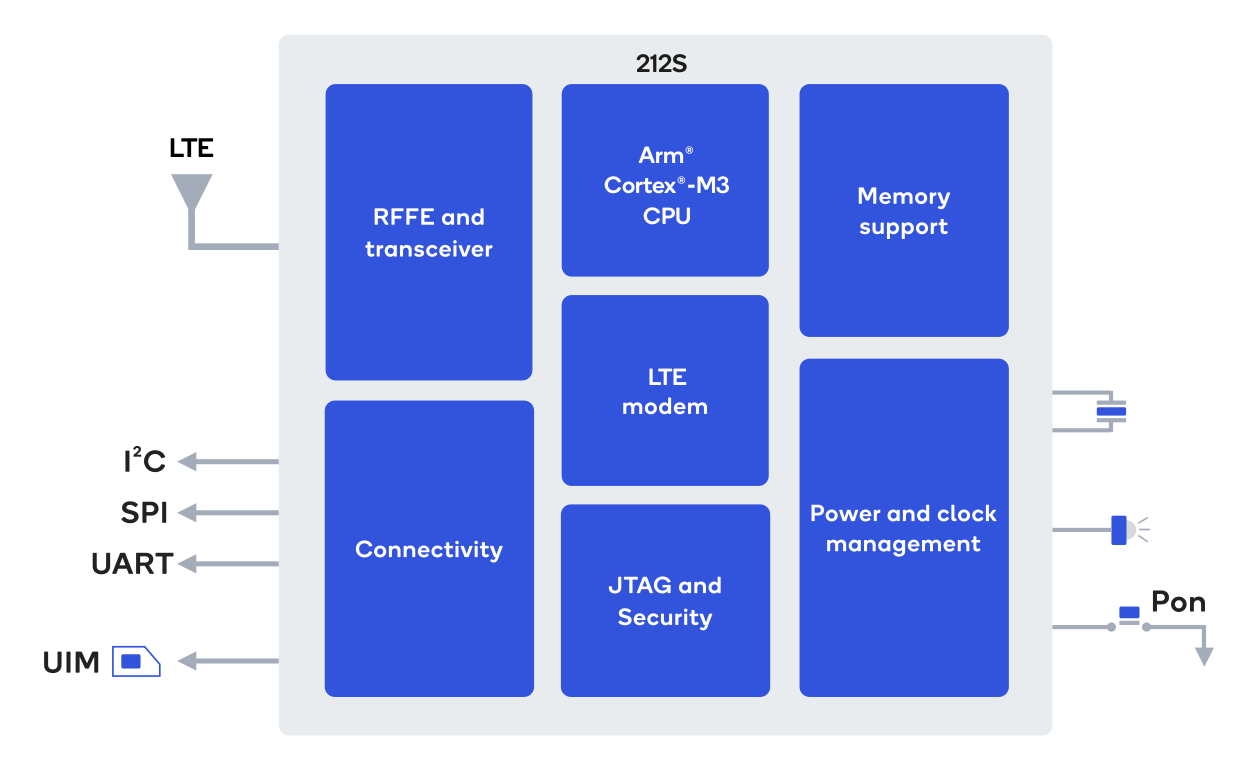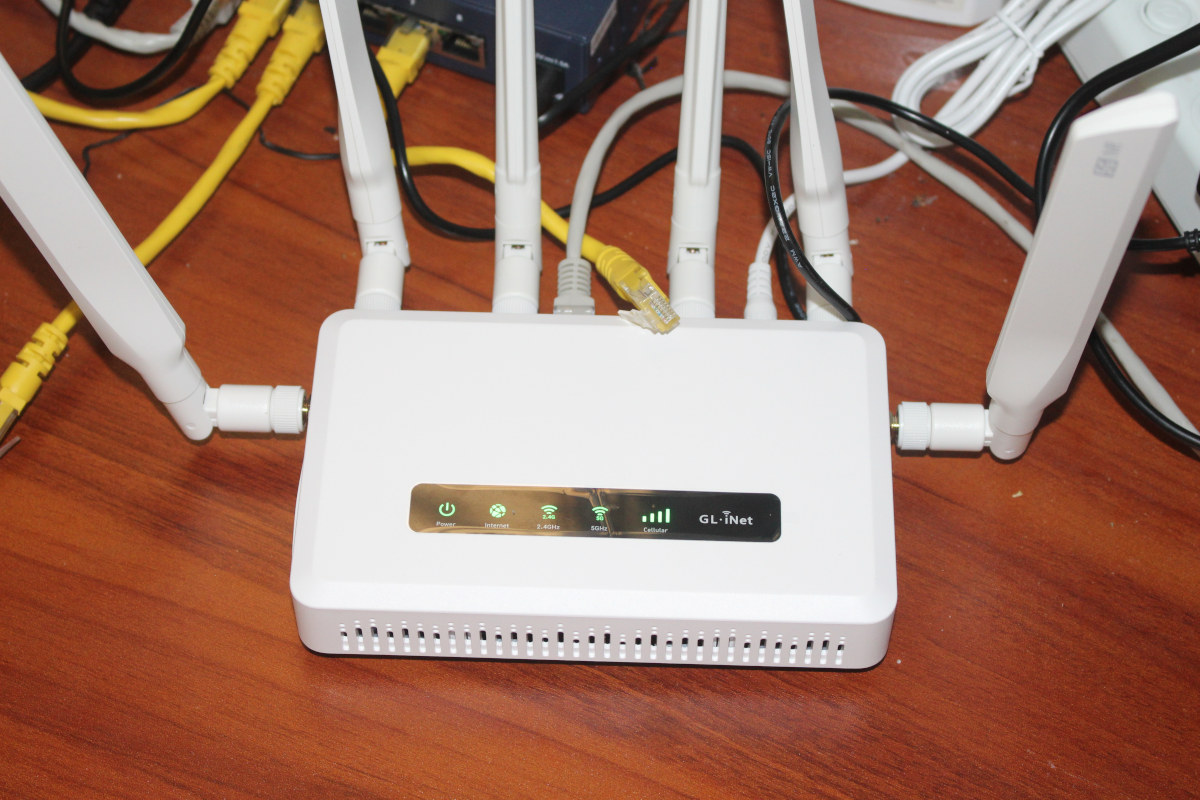Dusun DSGW-380, also called Dusun Pi 5, is an industrial AIoT gateway powered by the Rockchip RK3588 octa-core processor with a 6 TOPS AI accelerator and supporting a wide range of connectivity options. The gateway comes with 8GB LPDDR4 memory, and up to 128GB eMMC flash, and operates in a wide -25 to +75°C temperature range. It supports dual gigabit Ethernet, RS232, and R485 wired connectivity and various wireless protocols including WiFi 6, Bluetooth LE, 5G, and LoRaWAN. Dusun DSGW-380 specifications: SoC – Rockchip RK3588 octa-core processor with CPU – 4x Cortex‑A76 cores @ up to 2.4 GHz, 4x Cortex‑A55 core @ 1.8 GHz GPU – Arm Mali-G610 MP4 “Odin” GPU @ 1.0 GHz Video decoder – 8Kp60 H.265, VP9, AVS2, 8Kp30 H.264 AVC/MVC, 4Kp60 AV1, 1080p60 MPEG-2/-1, VC-1, VP8 Video encoder – 8Kp30 H.265/H.264 video encoder AI accelerator – 6 TOPS NPU System Memory – 8GB RAM Storage – […]
Gateworks GW7400 networking SBC features 6 Gigabit Ethernet ports, M.2 & mini PCIe sockets for wireless connectivity
Gateworks Venice GW7400 is a rugged industrial single board computer for networking and gateway applications with six Gigabit Ethernet ports, and one M.2 and three mini PCIe sockets for WiFi, cellular, and other wireless options. We first mentioned the GW7400 board around three years ago, when the company introduced the Venice family powered by NXP i.MX 8M processor. But the board launched today has a different design with more Ethernet, an NXP i.MX8M Plus AI processor, up to 4GB RAM, up to 64GB eMMC flash, and various interfaces such as USB 3.0, dual CAN Bus, DIO, I2C, SPI, and UART. Gateworks GW7400 specifications: SoC – NXP i.MX 8M Plus CPU – Quad-core Cortex-A53 @ up to 1.6 GHz (industrial-grade) Real-time core – Arm Cortex-M7 @ up to 800 MHz GPU – Vivante GC7000UL 3D GPU, Vivante GC520L 2D GPU VPU – Up to 1080p60 video encoding and decoding AI accelerator […]
BOXER-6406-ADN Alder Lake-N fanless embedded computer supports 9V-36V DC input
AAEON BOXER-6406-ADN is a compact fanless embedded computer powered by the popular Intel Alder Lake-N family of processors with their the Processor N50, Processor N200, or Intel Atom x7211E SoC. The mini PC comes with up to 32GB DDR5, supports M.2 NVMe SSDs and 2.5-inch SATA drives for storage, integrates two HDMI 2.0 video outputs and two 2.5GbE ports, and features specific to the embedded/industrial market such as three DB9 serial connectors (COM ports), one DB15 connector for digital I/Os, and a wide range 9V-36V DC input terminal block. BOXER-6406-ADN specifications: Alder Lake-N SoC (one or the other) Intel Atom x7211E dual-core processor up to 3.2 GHz with 6MB cache, 16EU Intel UHD Graphics; 6W TDP Intel Processor N50 dual-core processor up to 3.4 GHz with 6MB cache, 16EU Intel UHD Graphics; TDP: 6W Intel Processor N200 quad-core processor up to 3.7 GHz with 6MB cache, 32EU Intel HD graphics; […]
Ultra-compact 45x43mm CPU module features TI Sitara AM6231, AM6252, or AM6254 Arm SoC
MYiR Tech has just announced the tiny, yet full-featured MYC-YM62X CPU module powered by Texas Instruments Sitara AM6231, AM6252, or AM6254 Cortex-A53/M4 processor for HMI and IoT applications as well as the corresponding MYD-YM62X development board used for evaluation. The new MYiR module joins other Texas Instruments AM62x system-on-modules such as Toradex Verdin AM62, Forlinx FET625x-C, Variscite VAR-SOM-AM62, and others, but at just 45x43mm, it is the smallest AM62x CPU module we’ve seen so far yet the company says it still provides access to all features from the processor thanks to its 222 castellated holes. MYC-YM62X CPU Module Specifications: SoC (one or the other) Texas Instruments AM6254 (AM6254ATCGGAALW) with quad-core Cortex-A53 @ 1.4GHz, Cortex-M4F real-time core @ 400MHz, 3D GPU, 2x PRU-SS running up to 333MHz Texas Instruments AM6252 (AM6252ATCGGAALW) with dual-core Cortex-A53 @ 1.4GHz, Cortex-M4F real-time core @ 400MHz , no GPU, PRU-SS running up to 333MHz Texas Instruments […]
GL.iNet Puli AX (GL-XE3000) WiFi 6 & 5G router integrates a 6,400 mAh battery
GL.iNet Puli AX (also known as GL-XE3000) is a WiFi 6 and 5G cellular router with an integrated 6,400 mAh battery and running a fork of OpenWrt 21.02 on a MediaTek Filogic 820 dual-core Arm Cortex-A53 router SoC. If the design looks familiar it’s because it’s based on the same platform as the GL.iNet Spitz AX 2.5GbE, WiFi 6 and 5G cellular router that we reviewed last May, except the new Puli AX model comes with a 6,400 mAh which makes it even more convenient as a travel router. Puli AX (GL-XE3000) specifications: SoC – MediaTek MT7981A (Filogic 820) dual-core Arm Cortex-A53 processor @ 1.3 GHz System Memory – 512 MB DDR4 Storage – 8GB eMMC flash, MicroSD card slot Networking 1x 2.5GbE WAN Ethernet port 1x Gigabit Ethernet LAN port Dual-band IEEE 802.11a/b/g/n/ac/ax WiFi 6 up to 574Mbps (2.4GHz), 2,402Mbps (5GHz) RM520N-GL 5G cellular modem and 2x Nano SIM […]
Feature-rich, low-profile Rockchip RK3588 SBC is made for digital signage displays, industrial PCs, NVR, and more
Shenzhen Runwelltec RWA027-RK3588 is a low-profile SBC powered by a Rockchip RK3588 and equipped with plenty of connectors and ports. Those make the 11mm thin RK3588 board suitable for network video recorders (NVR), smart digital signage displays, industrial PCs, face recognition solutions, etc… The ultrathin board comes with up to 16GB RAM and up to 256GB eMMC flash, supports NVMe and SATA storage, provides HDMI 2.1 video output and five other LCD interfaces with optional USB/I2C touchscreen support, as well as two 4K-capable HDMI input ports, offers Gigabit Ethernet, WiFi 6 and Bluetooth 5.2 connectivity, up to nine USB interfaces, six UART, and so on. RWA027-RK3588 specifications: SoC – Rockchip RK3588 CPU – Octa-core processor with 4x Arm Cortex-A76 cores @ up to 2.4 GHz, 4x Arm Cortex-A55 cores GPU – Arm Mali-G610 MP4 GPU with support for OpenGL ES3.2, OpenCL 2.2, Vulkan1.1 AI Accelerator – 6 TOPS NPU VPU […]
Qualcomm 212S and 9205S Satellite IoT modems target remote monitoring and asset tracking
Qualcomm has just unveiled the Qualcomm 212S and Qualcomm 9205S Satellite IoT modems developed in collaboration with Skylo, an NTN service provider, to enable IoT devices connectivity across satellite and cellular networks for remote monitoring and asset tracking. At the beginning of the year, Qualcomm launched Snapdragon Satellite for two-way messaging on smartphones, but the company has now expanded its use of satellite data connectivity with the Qualcomm 212S and 9205S modems optimized for 5G IoT use cases relying on NTN (Non-Terrestrial Networks). Qualcomm 212S Satellite IoT modem Qualcomm 212S (QCX212S) modem specifications: CPU – Arm Cortex-M3 CPU @ up to 204 MHz Cellular connectivity Cellular Technology – Rel.14 LTE Cat-NB2, Rel.17 NB-IoT over NTN RF LTE low bands – B85, B5, B8, B18, B19, B12, B13, B17, B14, B28, B26, B20 LTE mid bands – B70, B25, B66, B4, B3, B2, B1, B23, N255, N256 Network Protocols – SSL, […]
GL.iNet Spitz AX review – Part 2: a router with 5G NR, WiFi 6, 2.5GbE, failover and load balancing
Earlier this month I introduced the GL.iNet Spitz AX (aka GL-X3000NR) router with 2.5GbE, WiFi 6, and 5G NR cellular connectivity listing the specifications, doing an unboxing, and going through the initial setup. I’ve now received a new SIM card for testing and installed it into the router to continue the review. 4G/5G cellular connectivity on Spitz AX router After powering the router, the SIM card was detected and showed a 5G connection, but quickly fell back to 4G as can be seen with the cyan icon in the screenshot below. Shortly after, I lost 4G data connectivity, and after a while, the modem was not detected at all. But after restarting the router, and clicking on the “Auto Setup” icon everything looked to be working fine and I was always on a 5G connection from “house 1”. You’ll notice an envelop icon on the top right corner of the […]


